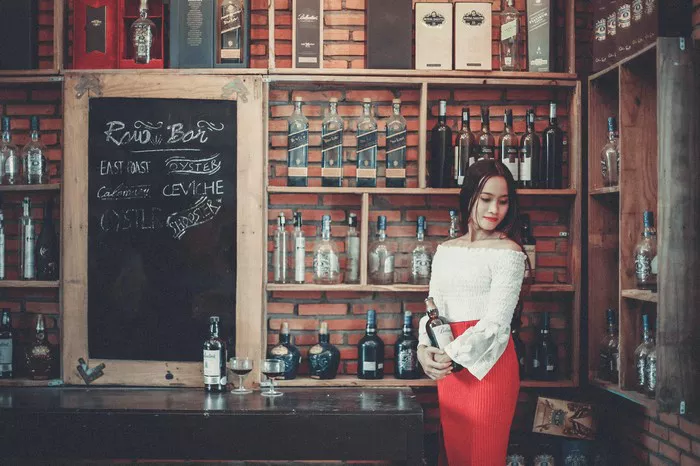Wine enthusiasts often find themselves navigating through the complexities of wine, seeking to decipher the nuances between varietals. Among the intricacies that perplex consumers, the dryness of white wines, specifically Chardonnay and Chablis, stands as a prominent query. Understanding the distinctions between these two beloved wines necessitates an exploration of their origins, winemaking processes, and inherent characteristics that ultimately determine their dryness.
Chardonnay and Chablis: A Comparative Overview
Chardonnay and Chablis are both esteemed white wines that originate from the Chardonnay grape. However, their unique terroirs, production techniques, and regional influences result in distinct flavor profiles and perceived levels of dryness. Chablis, hailing from the Burgundy region in France, is renowned for its mineral-driven, crisp expressions, while Chardonnay, produced globally, showcases versatility in style, ranging from oaked, buttery iterations to leaner, fruit-forward renditions.
Understanding Wine Dryness
The concept of dryness in wine refers to the absence of residual sugar, perceived through the wine’s taste and mouthfeel. Contrary to popular belief, dryness does not equate to a lack of flavor; rather, it denotes a wine’s relative sweetness. In technical terms, dry wines contain minimal residual sugar, allowing the natural acidity and other flavor components to shine through. Understanding the factors influencing dryness involves delving into the winemaking process, fermentation, and grape maturity.
Terroir: The Foundation of Wine Character
Terroir, a term encapsulating the environmental factors influencing grape cultivation, plays a pivotal role in defining the dryness of wines. Chablis benefits from its unique terroir characterized by Kimmeridgian limestone soils, imparting distinct minerality to the grapes. This mineral essence contributes to the perceived dryness of Chablis, enhancing its crisp, flinty character. On the other hand, Chardonnay’s versatility stems from its cultivation in various regions worldwide, each bestowing different soil compositions and microclimates, thereby affecting the perceived dryness of the wine.
Influence of Winemaking Techniques
Winemaking techniques significantly impact the dryness levels in both Chardonnay and Chablis. Chablis typically undergoes stainless steel fermentation, maintaining the wine’s purity and accentuating its mineral-driven attributes. Minimal oak influence in Chablis winemaking contributes to its perceived dryness, allowing the true expression of the Chardonnay grape without the masking effects of oak. Conversely, Chardonnay’s diversity in styles arises from varied winemaking approaches, including oak aging, malolactic fermentation, and lees stirring, contributing to a spectrum of dryness levels across different Chardonnay wines.
Grape Maturity and Dryness Perception
The ripeness of grapes at harvest significantly influences the residual sugar content and subsequent perceived dryness of wines. Grapes harvested at optimal maturity with lower sugar levels translate into drier wines. Chablis grapes, picked earlier to preserve acidity and minerality, yield wines with heightened dryness perceptions. Contrarily, Chardonnay grapes’ diverse cultivation regions and varying harvest times result in a spectrum of dryness, from leaner, crisper styles in cooler climates to fuller-bodied, riper expressions in warmer regions.
Analyzing Dryness in Chardonnay vs. Chablis
Comparing the perceived dryness between Chardonnay and Chablis requires a sensory evaluation encompassing taste, mouthfeel, and aroma. Chablis, with its pronounced minerality and high acidity, often presents as drier on the palate, accentuating its purity and crispness. The absence of oak influence in Chablis allows the fruit and mineral characteristics to shine, contributing to its perceived dryness. In contrast, Chardonnay’s dryness perception varies widely based on winemaking styles, with oaked versions exhibiting a rounder mouthfeel due to malolactic fermentation and barrel aging, while unoaked Chardonnays tend to showcase brighter acidity and fruit-driven dryness.
Food Pairing Dynamics
Understanding the dryness levels of Chardonnay and Chablis is instrumental in successful food pairing. Chablis, with its high acidity and mineral edge, pairs impeccably with seafood, shellfish, and lighter dishes, enhancing the flavors without overpowering the palate. Its perceived dryness acts as a palate cleanser, making it an ideal companion to delicate cuisines. On the other hand, Chardonnay’s diverse styles accommodate a broader range of pairings; unoaked versions complement lighter fare, while fuller-bodied, oak-aged Chardonnays harmonize with richer dishes, owing to their textural complexity and balanced dryness.
Consumer Preferences and Market Trends
Consumer preferences for dry white wines fluctuate based on evolving trends and regional inclinations. The perceived dryness of Chablis aligns with the current global trend favoring lighter, more acidic wines that complement a variety of cuisines. Its distinctive minerality and dry profile cater to consumers seeking a refreshing, terroir-driven experience. Conversely, Chardonnay’s popularity stems from its versatility, appealing to a broad spectrum of consumers due to its diverse dryness levels, ranging from crisp and lean to rich and full-bodied, accommodating varied palate preferences.
Conclusion
In the realm of white wines, the perceived dryness of Chardonnay and Chablis emerges as a key consideration for enthusiasts and connoisseurs alike. While both wines originate from the Chardonnay grape, their distinctive terroirs, winemaking techniques, and grape maturity levels contribute to differing levels of dryness. Chablis, characterized by its minerality and high acidity, presents as notably dry, accentuating its purity and terroir expression. On the other hand, Chardonnay’s versatility yields a spectrum of dryness, influenced by winemaking styles and regional variations. Understanding the nuances between these wines facilitates informed choices, catering to diverse preferences and enhancing the appreciation of the intricate world of white wines.
As you explore the realms of Chardonnay and Chablis, let the quest for dryness unveil the depth and diversity within these exquisite white wines, inviting you to savor each unique expression, one glass at a time.


